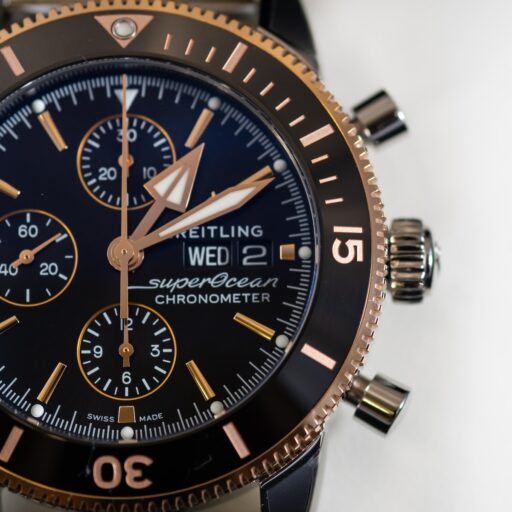Support our educational content for free when you purchase through links on our site. Learn more
Were watches a thing in the 1800s? [2024] ⌚️
Quick Answer: Yes, watches were indeed a thing in the 1800s. In fact, the 19th century saw significant advancements in watchmaking technology and the rise of pocket watches as a popular accessory. Let’s dive into the fascinating history of watches in the 1800s and explore how they evolved over time!
Table of Contents
- Quick Answer
- Quick Tips and Facts
- Background: The Evolution of Watches
- 1. The Rise of Pocket Watches
- 2. Advancements in Timekeeping Mechanisms
- 3. The Quartz Revolution
- 4. The Emergence of Wristwatches
- 5. The Smartwatch Era
- FAQ
- Conclusion
- Recommended Links
- Reference Links
Quick Answer
Yes, watches were indeed a thing in the 1800s. The 19th century witnessed significant advancements in watchmaking technology, leading to the rise of pocket watches as a popular accessory. From the introduction of the balance spring to the invention of the lever escapement, the 1800s marked a period of innovation and refinement in timekeeping mechanisms. Later in the century, wristwatches began to gain popularity, eventually leading to the smartwatch revolution we see today.
👉 CHECK PRICE on: Pocket Watches | Wristwatches | Smartwatches
Quick Tips and Facts
- The 1800s saw significant advancements in watchmaking technology.
- Pocket watches were the most popular type of watch in the 19th century.
- The balance spring and lever escapement greatly improved watch accuracy.
- The quartz revolution in the 1960s introduced more accurate and affordable watches.
- Wristwatches gained popularity in the late 19th century and eventually surpassed pocket watches.
- The smartwatch era began in the early 2010s with the introduction of devices like the Apple Watch.
Background: The Evolution of Watches

Before we delve into the specifics of watches in the 1800s, let’s take a moment to appreciate the evolution of timekeeping devices. From sundials to water clocks, humans have always sought ways to measure time accurately. However, it wasn’t until the 15th century that portable spring-driven clocks, known as “clock-watches,” emerged in Europe.
These early timepieces paved the way for the development of watches as we know them today. Over the centuries, watchmaking technology evolved, leading to the creation of intricate mechanical devices that could be worn on the wrist or carried in pockets. The 1800s witnessed significant milestones in watchmaking, shaping the industry for years to come.
1. The Rise of Pocket Watches
In the 1800s, pocket watches became the go-to timekeeping accessory for both men and women. These watches were designed to be carried in pockets, attached to chains or ribbons. The 17th century saw a shift in pocket watch styles, with men favoring smaller, more practical designs.
One notable figure in the history of pocket watches is Prince Albert, who introduced the ‘Albert chain’ accessory. This chain allowed pocket watches to be secured to outer garments, adding a touch of elegance to the wearer’s ensemble. Pocket watches became a symbol of status and sophistication, with intricate designs and engravings adorning their cases.
2. Advancements in Timekeeping Mechanisms
The 1800s marked a period of significant advancements in timekeeping mechanisms. In 1657, the balance spring was added to the balance wheel, greatly improving watch accuracy. This innovation, along with the introduction of the cylinder escapement, addressed the accuracy issues associated with the earlier verge escapement and foliot system.
Later in the century, the lever escapement was invented, further enhancing watch accuracy and reliability. These advancements in timekeeping mechanisms laid the foundation for the precise watches we have today.
3. The Quartz Revolution
In the 1960s, the watch industry experienced a revolution with the introduction of quartz watches. Unlike their mechanical counterparts, quartz watches relied on electricity and a vibrating quartz crystal to keep time. This breakthrough technology made watches more accurate, affordable, and shock-resistant.
The quartz revolution had a profound impact on the watch industry, leading to what is known as the “quartz crisis.” Traditional mechanical watchmakers faced fierce competition from quartz watches, which quickly gained popularity among consumers. However, mechanical watches persisted, catering to a niche market of enthusiasts who appreciated the craftsmanship and artistry behind these timepieces.
4. The Emergence of Wristwatches
While pocket watches dominated the 1800s, the late 19th century saw the emergence of wristwatches. Initially considered a feminine accessory, wristwatches gained popularity among men during wartime. Soldiers found it more convenient to wear watches on their wrists for easy access to time during combat.
The transition from pocket watches to wristwatches was not without its challenges. Watchmakers had to design smaller, more robust movements to fit within the confines of a wristwatch case. However, advancements in technology and design eventually led to the widespread adoption of wristwatches, making them the preferred choice for timekeeping.
5. The Smartwatch Era
In the early 2010s, the watch industry witnessed another revolution with the introduction of smartwatches. These computer devices worn on the wrist offered capabilities similar to smartphones, including notifications, fitness tracking, and even the ability to make calls.
The first smartwatch, the Linux Watch, was introduced in 1998. However, it wasn’t until 2014, with the release of the Apple Watch, that smartwatches gained mainstream attention. Today, smartwatches have become an integral part of our lives, offering a blend of fashion and technology on our wrists.
FAQ

Did people wear watches in the 1800s?
Yes, people did wear watches in the 1800s. Pocket watches were the most popular type of watch during this period, with both men and women using them as fashionable accessories.
Did they have pocket watches in the 1800s?
Yes, pocket watches were widely used in the 1800s. They were carried in pockets and attached to chains or ribbons, often serving as a status symbol.
Read more about “… When Were Watches Invented? A Comprehensive History”
Did they have watches in 1880?
Yes, watches were available in 1880. By this time, pocket watches were the norm, and wristwatches were just beginning to gain popularity.
Were watches a thing in the 1700s?
Yes, watches were indeed a thing in the 1700s. While pocket watches were more prevalent, the 18th century saw the emergence of wristwatches as well.
Conclusion

In conclusion, watches were definitely a thing in the 1800s. The 19th century witnessed significant advancements in watchmaking technology, leading to the rise of pocket watches as a popular accessory. From the introduction of the balance spring to the invention of the lever escapement, the 1800s marked a period of innovation and refinement in timekeeping mechanisms. Later in the century, wristwatches began to gain popularity, eventually surpassing pocket watches in popularity. Today, we find ourselves in the era of smartwatches, where technology and fashion seamlessly intertwine on our wrists.
So, whether you’re a fan of the classic elegance of a pocket watch or the modern convenience of a smartwatch, the 1800s laid the foundation for the timepieces we cherish today. Embrace the rich history of watches and find the perfect timekeeping companion that suits your style and needs!
Recommended Links
- 👉 CHECK PRICE on: Pocket Watches | Wristwatches | Smartwatches
- Luxury Watch Brands
- Watch Brand Comparisons
- Guide to Buying Watches
- Men’s Watches
- Affordable Watches
- When Did Peter Henlein Invent the Watch? 2024 ⌚️


